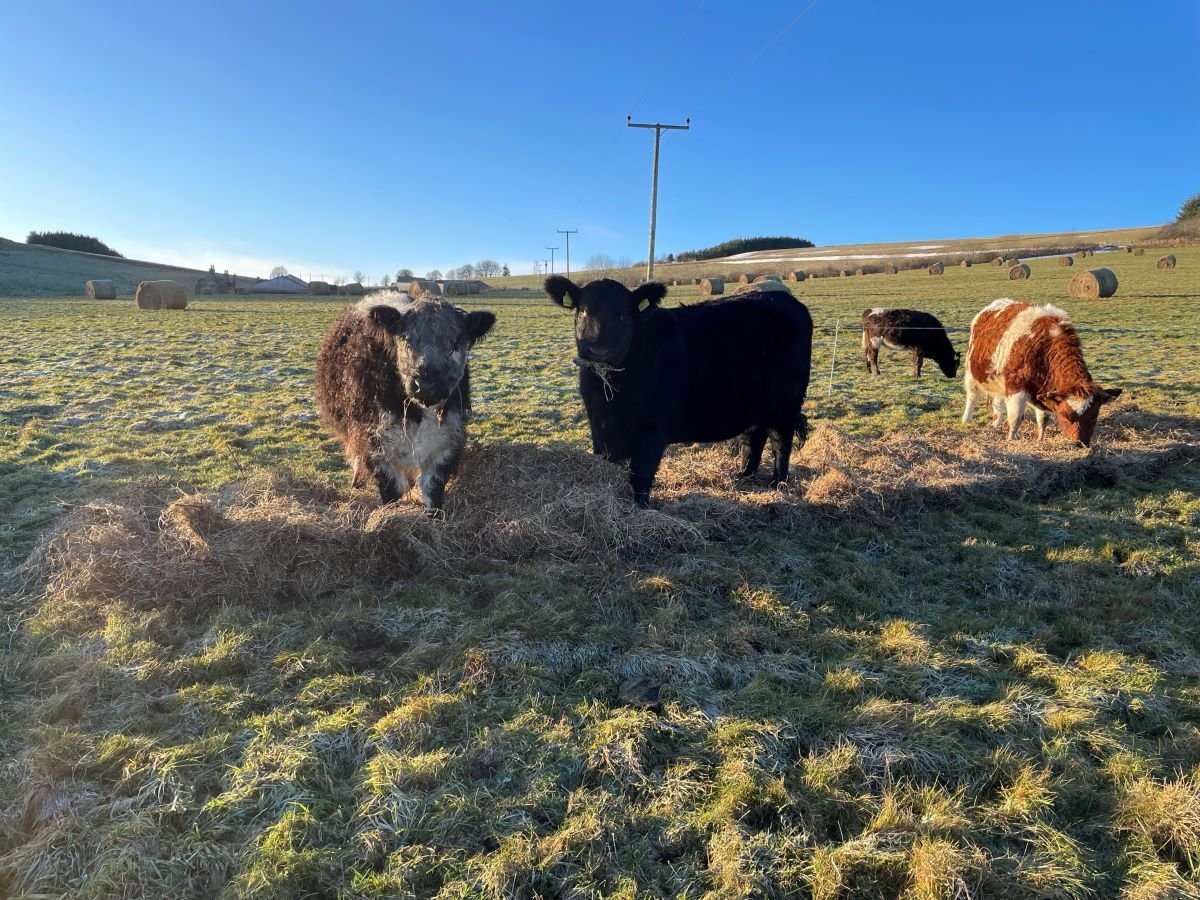Winter bale grazing at Beldorney
By Nikki and James Yoxall, Co-Heads of Regenerative Agriculture
Grampian Graziers have been grazing cattle at Beldorney for just under a year now, using an adaptive grazing management approach to support increases in biodiversity and improve soil health.
Over the winter, this has included grazing targeted areas for wader bird habitat and conservation of species rich grassland and is now focused on bale grazing. Bale grazing is much more common in North America, but a growing number of UK farmers are now adopting this approach to managing their cattle over winter.
When bale grazing, farmers will often place their bales out in the field well in advance. At Beldorney, the bales were left out where they came off the baler after cutting a field for hay. This means reduced driving over fields, which not only limits issues of soil compaction but also cuts down on fossil fuel use. Additional bales were bought in, made at an RSPB species rich grassland site to help add additional plant species diversity in the fields, without the need for ploughing or other grassland cultivation.
All through the year the cattle are moved almost every day, using electric fencing to manage their movement across the estate. This creates lots of rest across the land, contributing to increased biodiversity and soil health. The same is done during the winter, with the cattle moved to a new section of field each day, with a bale of hay rolled out across the grass.
Rolling out the hay in this way has a number of benefits; it means the herd can all get to eat the hay without crowding each other, which is particularly important for horned cattle. It also means that there is no heavy lifting of a feed ring, or the ensuing poaching (muddying impact) of the ground caused when animals gather in a circle. The hay is spread over a larger area, meaning there is more hay-to-ground contact. This is important for two reasons. Firstly, the hay contains lots of seeds that can go back into the soil, which is particularly important when grazing with the species rich bales, which are full of a diverse seed mix including yellow rattle, common knapweed, yarrow, ladies bedstraw, meadow vetchling, birds foot trefoil and ox eye daisy among others. Secondly, there is evidence from research undertaken in North America showing that soil organic matter significantly increases in the years following bale grazing, which means more capacity for water infiltration and carbon sequestration in the soil. Any hay left behind is trodden into the ground and becomes food for earthworms and other soil organisms.
The longer grass and the underside of bales are ideal habitat for field voles and pygmy shrews, which in turn provide a food source for birds of prey. Kestrel, buzzard, hen harriers and merlin have all been spotted hunting above the bale grazing field, with evidence of owl pellets found on the ground next to bales after a night’s hunting.
Deciding to keep the cattle out all year round means dung deposits from the cattle provide winter habitat for dung beetles, and manure management from dealing with straw and waste is not required. Instead, the cattle continue to cycle nutrients in field all year round, meaning there is no need for dung piles or muck spreading. Outwintering also reduces the health risks associated with keeping cattle inside, where pneumonia can be a significant problem. The cattle are incredibly well adapted to living out in cold weather, with very thick coats and their rumens acting as internal radiators, keeping them warm even when the temperature drops well below freezing.
As the work across the Highlands Rewilding estates is data-led and underpinned by science, Beldorney is now one of six farms taking part in a Soil Association Innovative Farmers Field Lab, supported by Pasture for Life. The Field Lab will set out to monitor the impacts of bale grazing on soil and forage health over the next four years, helping to quantify what is currently only anecdotal evidence in a UK setting.
A 1 minute introduction to regenerative agriculture at Beldorney






